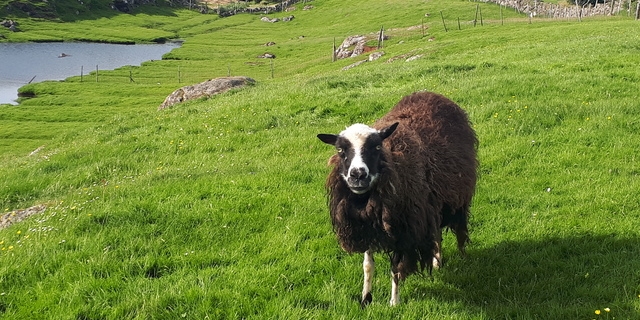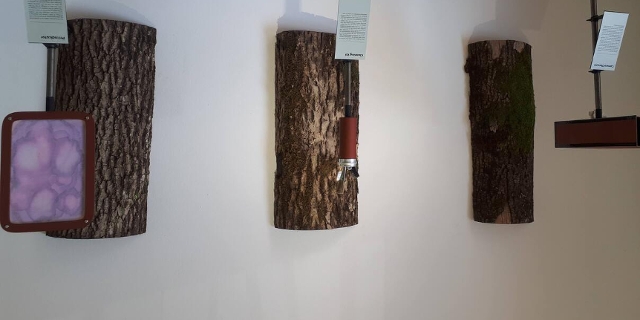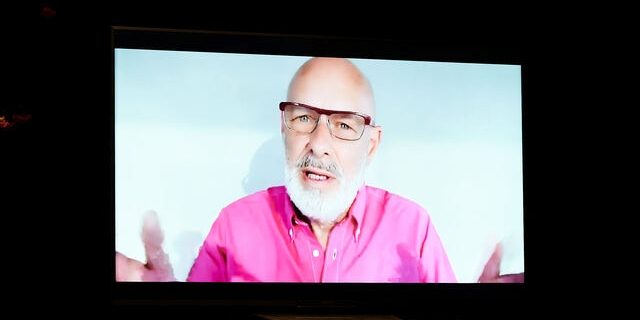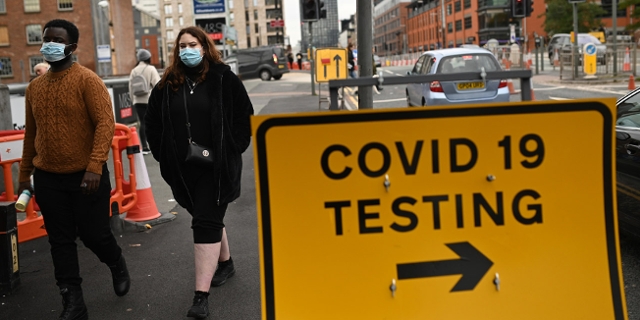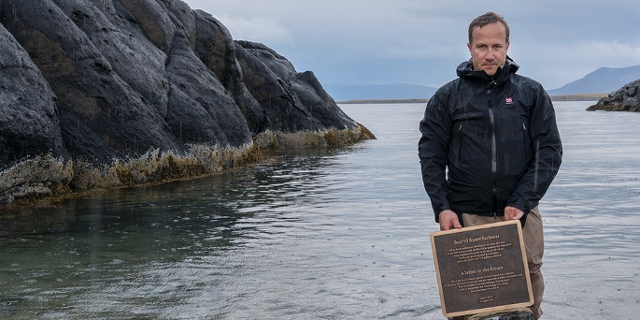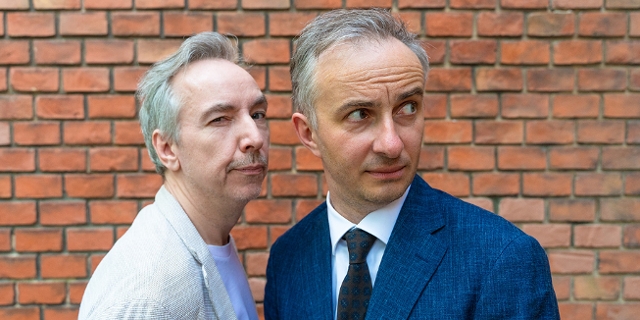A Giant Leap: Humankind’s next great adventure will be into space
By Johnny Bliss & Ilya Baykin (Russian Science Festival)
Once upon a time, a large portion of humanity set itself a goal: to get to the moon within ten years. That goal was reached. Neil Armstrong and Buzz Aldrin walked on the moon, and within a couple of years, ten other men had as well.
Then the Apollo program ended, and humankind remained in near-earth orbit.
Almost 50 years later, we are just about ready to return to outer space, to the moon and beyond. The fifth iteration of the Starmus Festival explores our means and motivations for going to space, doing fundamental science, and uniting across national lines.

Linda Lamon
Slide from a lecture about exoplanets
A primordial soup of genius and achievement
The thing about Starmus is that its overarching ideas always emerge from a primordial soup of genius and achievement, brewed up when you throw an impressive number of scientists, astronauts, artists, and space entrepreneurs into a small space. Buzz Aldrin growls about the need to build a moonbase to supply Mars flights, Bob Smith of Blue Origin talks about how to get a million people into space — step by tiny step — and Jack Schmitt claims that you can grow vegetables in Moon soil. Also, Apollo astronaut Charlie Duke talks about Jesus, because Charlie Duke talks about Jesus at every Starmus, and not even Richard Dawkins dares fault him.
Past Starmus festivals have sometimes veered between hard theoretical physics and apocalyptic atheism — Starmus 3 and 2, respectively. I found this Starmus to be optimistic, accessible, and clear. It celebrates one of the most important transnational super-tasks of the 20th century — the Space Race — largely from the viewpoint of the American Apollo program. Questions about human purpose and planetary future are asked. Past glories are revisited. This time, we are not merely, to quote President Kennedy at Rice University (1962), going to space “because it is there.” We are going to space because it is an imperative for human progress and survival.
The accompanying soundtrack to these weighty themes comes in the form of a wholly improbable program of acclaimed musicians and visual artists. One notable example is when Dr. Brian May sang Queen songs like ‚Who Wants to Live Forever‘ and ‚We are the Champions‘, accompanied by tenor Vittorio Grigòlo, who did an eerily convincing job of channeling Freddie Mercury. Their backing band, such as it were, included the likes of Hans Zimmer, Rick Wakeman, Steve Vai, and the 21st Century Symphony Orchestra.
So on the one hand, this was as close to seeing Queen live in 2019 as you’re gonna get: on its own, that’s already goosebump-inducing. But on the other hand, when you add all these other elements, you wonder if it might have even far surpassed that. Really, it was as if some little kid was like „hey, wouldn’t it be cool if we got all of these people on-stage together at once?“

Linda Lamon
From left: Steve Vai, tenor Vittorio Grigòlo, Brian May, Al Worden, Buzz Aldrin, Walt Cunningham, Charlie Duke, Rusty Schweickart. (Pictures by Linda Lamon)
The founder of Starmus, Dr. Garik Israelian, does not merely want the festival to be a celebration, he wants it to be an institution of science communication. To that end, he has established the Stephen Hawking Medal for Science Communication, which does not yet come with a large cash prize. However, it does come with a free watch, courtesy of this man who spookily appears when you least expect him!

Linda Lamon
There he is, with Buzz Aldrin! Like the tooth fairy of watches!
Recipients this year included Brian Eno, Buzz Aldrin, and Elon Musk, who joined us via video stream from Apollo’s old launch site at Cape Canaveral. Each of the recipients represents a different thread from this year’s themes: concern for mankind’s future, Apollo veterans spurring us back to space, and the progressing ambitions of the private space sector.
Almost every lecture and discussion panel echoed these themes, starting with the introductory presser. It featured Buzz Aldrin, Walt Cunningham, and Jack Schmitt clashing with Brian Eno and Tony Fadell over climate change. Aldrin — every bit the grizzled Hemingway character at the end of life, self-assured and sounding like a sequoia in high wind — said that „We will not achieve peace through zero carbon,“ after Eno spoke of climate change being the challenge that would unify mankind.

Linda Lamon
From left: Brian Eno, Charlie Duke, Al Worden
Aldrin’s positive message is that there is a good, practical reason to go back to the moon — to build a supply and refueling base for Mars missions. Bob Smith and his competitors at SpaceX talked at length about all the ways they can get us to orbit and beyond, but Aldrin was looking much further — to the big question of how we can bypass earth’s gravity field when dealing with Mars-bound logistics.
Why bother?
A lot of the talks seemed to answer the layman’s question of „why bother?,“ both in relation to space exploration and fundamental science as a human avocation. Tony Fadell talked about the NASA-developed technology that he used in the iPod and iPhone. The Nobel Laureate panel mid-week talked about how the math used to detect radio signals from the collapse of tiny black holes — originally hypothesized by Stephen Hawking — was used 20 years later to pick out WiFi signals from the world’s background noise and thus make wireless internet a reality.
Numerous astronauts talked about their first sight of this fragile blue planet under them, and how it made them see their citizenship differently. Leaving the Earth can have the added effect of making you care more about preserving it, for future generations.

Linda Lamon
Slide from one such presentation
Colonel Chris Hadfield spoke about the limitations of modern space suits, relating a story of how soap and oil from his suit’s visor inadvertently blinded him during a spacewalk. Astronauts, he told us, also have to be suited up not for the height that they are down on earth, but rather for the height that they will be in space — usually around 5 centimeters taller. He concluded that the space suits are amazing for what they are, but still have a long way to go.
British astronaut Tim Peake and Russian cosmonaut Gennady Padalka both riffed on the challenge of trying to keep fit and healthy in space. While Gennady showed videos of weight-lifting machines, Tim told us that he ran the London marathon from space, on a treadmill.
Gennady did the best job of giving us a video tour around the space station, showing how astronauts shave, brush their teeth, prepare food, and live around and virtually on top of each other. Gennady’s informal tour of video clips from the ISS on his laptop was both very entertaining and informative, and had the added effect of making life in space seem like something that could become very domestic, normal, and even fun. Like something any of us could and should eventually try. This is, of course, the goal of many of the space entrepreneurs present!
ISS astronaut Sandra Magnus had some interesting thoughts about the normalization of space travel, and how that works economically. She pointed out that at the outset, a new field is often funded almost entirely by national governments. Later, it becomes a mixture of government and private funding, and finally it opens up to capitalist innovation, with the majority of the efforts being made by the private sector. This process was echoed by space historian John Lodgson, who led us from JFK’s initial geopolitical motivations for taking us to the moon (1961), to the eventual discontinuation of the Apollo program by President Nixon (in 1971), and finally the renaissance of interest in space travel by the private sector in the 21st century.

Linda Lamon
Blue Origin’s New Shepard commercial rocket, as presented by Bob Smith.
Presenting: new and old technologies
Speaking of time travel, a lot of technologies and ideas presented here are very new and revolutionary, but then some very old technologies were also presented — enter Dr. Brian May and his pet project: stereoscopy, the Victorian precursor to virtual reality and modern 3D-imaging.
Basically, how stereoscopy works is you take two slides — one for each eye — and you place them side-by-side in a stereoscope, a device which looks a bit like a modern virtual reality headset, but REALLY old school. The left lens shows you the left slide and the right lens shows you the right slide, which (with the help of your brain) produces an honest-to-goodness 3D image!
Brian’s fascination with the field stems from his childhood, when cereal boxes used to come with gifts inside for kids. One of those gifts was a stereoscopic card, which left a big impression on him. More than half a century later, he’s finally found the time to return to this obsession as an adult. Along with Astronomy magazine’s chief editor Dave Eicher, he’s just published a book called Mission Moon 3D, which is chock full of stereoscopic images that they’ve assembled together (special glasses included).

Linda Lamon
David Eicher and Brian May, presenting their new book.
There is no ’I’ in STEAM. (But there is an ’A’)
There are other artists among the scientists, and scientists among the artists, taking STEM and effectively making it STEAM. Norwegian neuroscientist and Nobel Laureate May-Britt Moser gave a multimedia lecture about her pioneering work discovering „grid cells“ in the brain — in other words, brain GPS. Along with video footage and animation showing the brains of lab rats in a confined space, she was accompanied musically by Steve Vai and the Trondheim Soloists. It was all very avant-garde.
Another example is the Apollo 15 astronaut Al Worden, who became a poet after his trip into space. He wrote a poetry book called „Hello Earth; greetings from Endeavour“, and graced us with some of his poetry live on-stage. Or take the ISS astronaut Nicole Stott, who painted the first watercolor in space, of the Isla Los Roques, a Venezualan archipelago.
Some of the most impressive, globally-minded and coherently-delivered talks came courtesy of women scientists: Jill Tarter, for example, the pioneering former director of the Center for SETI Research. Or Nobel Prize-winning Canadian physicist Donna Strickland, who co-invented Chirped Pulse Amplification a.k.a. the „Laser Hammer“. Or Tasmania-born Nobel Prize-winning biochemist Elizabeth Blackburn, who discovered the enzyme telomerase, which replenishes telomeres and is a key to a long, healthy life.

Linda Lamon
From left: Donna Strickland, May-Britt Moser, Jill Tarter
Look, I’m not trying to say that men’s upper body strength and testosterone load makes them unable to compete with women in the scientific arena; however, it is an objective truth that Elizabeth Blackburn’s proposal was the most ambitious beginning we’ve ever seen announced on the Starmus stage.
Get your attention there, did I? Alright, here we go.

Linda Lamon
Elizabeth Blackburn and me (Johnny)
The Lindau Declaration 2020
Starmus is a singular science communication event, but that’s not to say that there is a unity of message. Some talks filled in the audience’s knowledge of astronomy and space exploration in a pointillist fashion, while others took a bird’s eye view of everything that science, astronomical and otherwise, does and is meant to do. This year, two of the grand old men - Martin Rees and Robert Wilson - read globally-oriented lectures that swept from the genesis of life to carbon consumption to a potentially post-human future. However, Dr. Blackburn’s initiative points the way forward from this present moment. Her proposal for global science collaboration, with the freedom to share results and experiment, is about those very things that the Space Race was about: getting the material support behind curiosity-driven collective endeavors.
In Dr. Blackburn’s own words, "the basic science that I was doing had led me into things that were so unexpected that this was a story that needed to be told over and over again — when we have the freedom to explore how nature works, we find things that we didn’t ever expect — and some of them can be really relevant and helpful for human health.
„So we need a real safe space for the really exploratory fundamental curiousity-driven sciences that have led to all advances we’ve heard about all this week. The freedom to ask questions! Let’s make sure that fundamental science stays alive and well and thriving, really lets human creativity express itself at its best, as we try to understand the amazing universe we’re in!“
Elizabeth Blackburn’s open science initiative is called the Lindau Declaration.

Linda Lamon
An astronaut looking in awe at the Earth, from one of this year’s presentations.
--
Special thanks to Dr. Garik Israelian for putting on this festival, Marco and Melissa from PUBLIC NYC for organizing all those interviews and putting up with my incessant press requests, and everyone who agreed to an interview.
Diskutiere mit!
Publiziert am 30.06.2019








